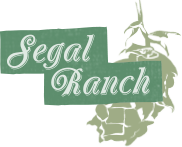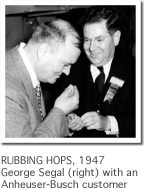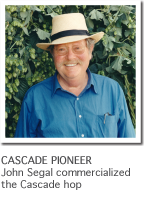History

|
|
George Segal, Sr.Any entrepreneur will tell you that timing is everything. Our grandfather, George Segal, a Boston native and child of immigrant parents, ventured solo to New York City in his teenage years to seek a living in the wholesale grocery business. Years later, on an entrepreneurial hunch, he established a small hop ranch in Malone, New York, in 1941. |
TIMELINE
1894 Our story starts in Boston, the birthplace of our grandfather, George Segal, a first-generation American. 1910 At the age of 16, George Segal grows a moustache to add years to his teenage visage and heads to New York City to seek his fortune in the wholesale food business. While selling food products to mom and pop stores in NYC during Prohibition, Segal notices small packages of hops being sold for home brewing. This piques his interest the hops business. 1941
Any entrepreneur will tell you that timing is everything. Our grandfather recognized a unique market opportunity created by two forces: the growing demand for hops after the repeal of Prohibition in the US and the shortage of hops resulting from WWII-ravaged Europe. On this entrepreneurial hunch, George Segal establishes a 100-acre hop ranch in Malone, New York.
1950 George Segal dies suddenly while enjoying a Ballantine IPA at a New York City restaurant. His son, John Segal, steps into the family business. 1959 After 18 years of cultivating hops successfully in upstate New York, Segal Ranch is hit by a blight that decimates the crop and along with it, the entire New York-based hop growing industry. The Yakima Valley in the State of Washington becomes the new base of operations for Segal Ranch, where the dry climate and the ability to irrigate are the ideal terroir for the cultivation of hops. 1970 At a time when European-grown hops were considered superior in the US market, John Segal is a passionate advocate for American-grown hops and the development of new hop varieties. Working with Chuck Zimmerman, a USDA hop research scientist at Washington State University's research station in Prosser, WA, Segal agrees to plant an experimental, new aroma variety, 56013. Segal believes passionately that 56013 has the potential to compete with European aroma hops. Despite the lack of interest in the variety among US brewers, he continues to cultivate 56013. 1972 Coors Brewery places the first order for 56013, now called Cascade. Segal sells one million roots to US hop growers to establish the variety. The Cascade hop is launched. 1975 Fritz Maytag launches Anchor Steam's Liberty Ale with Segal Ranch Cascade hops, the first IPA brewed in America after Prohibition and the first American single-hop ale and dry-hopped ale. 2005 John Segal dies. Over a half century in the industry, he passes on to all of us a passion for growing the purest and highest quality hops possible and the importance of building close relationships with brewers. His daughter Joanne Fryer steps in to manage the family business. 2007 Martin Ramos, aka, the 'hop whisperer," named manager of Segal Ranch. He succeeds Willard Mears, who with his father, Del, managed the Segal Ranch for over 50 years. John Segal Jr. who had previously worked for his father agrees to take over the running of the Segal Ranch with the goal of establishing "farmer direct" relationships with craft brewers. High-Oil Cascades grown on the Segal Ranch are a sought-after ingredient in many fine craft-brewed ales. 2013 The late John Segal is nominated for the "Order of the Hop" award. |
|
|
John Segal, Sr.George Segalís second son, John, took over the family business in 1950. John was a passionate advocate for American-grown hops and the development of new hop varieties. Segal pioneered the commercial cultivation of the Cascade hop, now a mainstay of breweries across America and a favorite varietal among craft brewers. Today, High-Oil Cascades grown on the Segal Ranch are a sought-after ingredient in many fine craft-brewed ales. |



